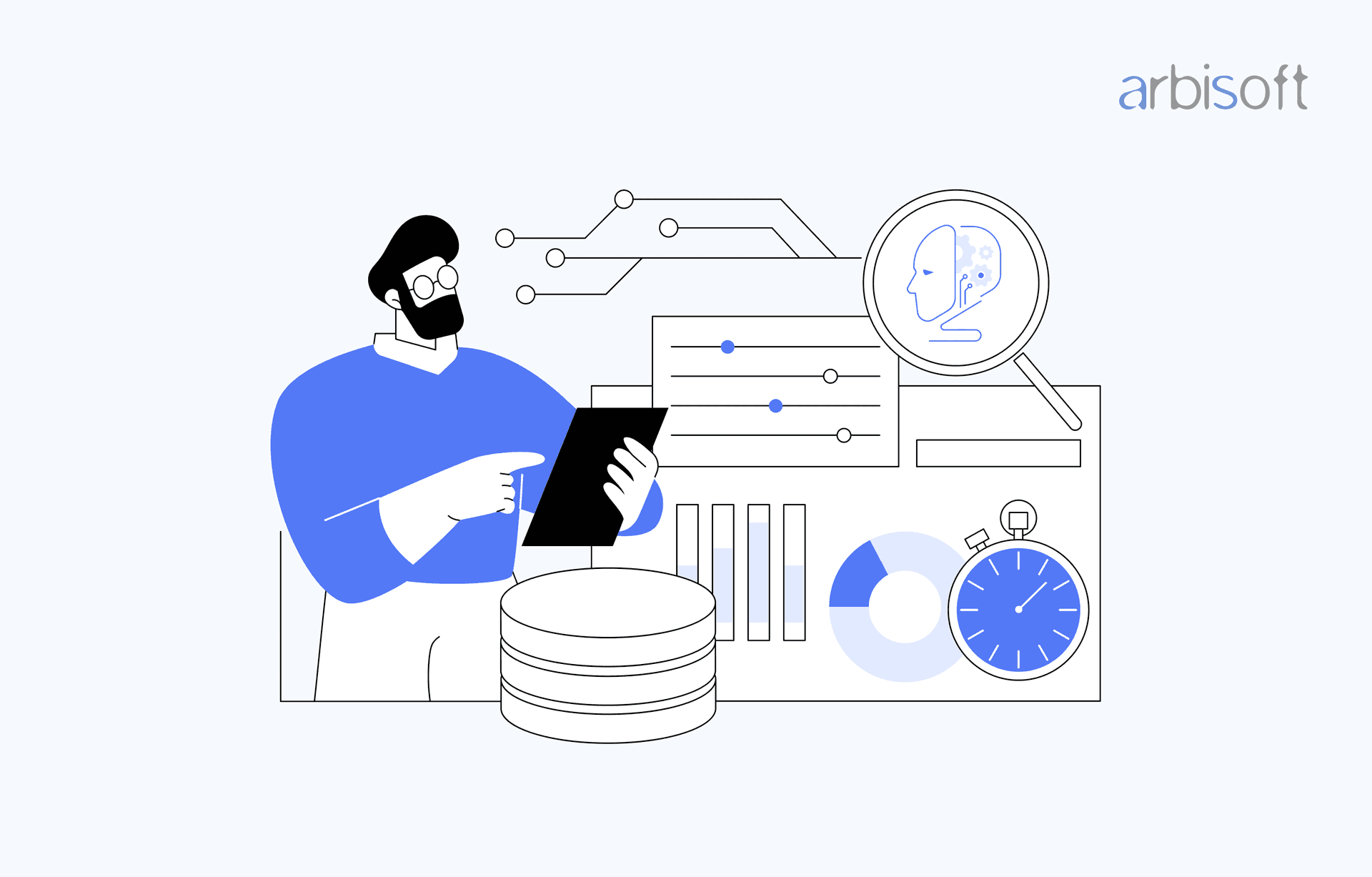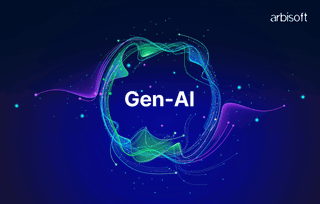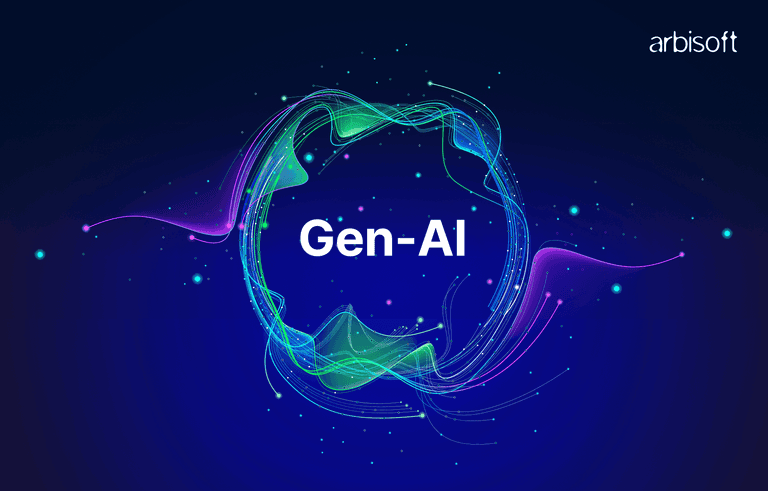We put excellence, value and quality above all - and it shows




A Technology Partnership That Goes Beyond Code

“Arbisoft has been my most trusted technology partner for now over 15 years. Arbisoft has very unique methods of recruiting and training, and the results demonstrate that. They have great teams, great positive attitudes and great communication.”
Predictive Analytics AI in the World of Business

Imagine knowing what your customers want before they do or spotting a market trend before it even happens. That's the power of predictive analytics AI! It turns your data into useful insights, giving your business a major edge.
We all know how tough it can be to make smart decisions when you're buried under piles of data. Traditional methods of analyzing this data can be slow and may not give you the deep insights you need. This often leads to missed opportunities, inefficiencies, and higher costs.
Predictive analytics AI is here to help. It uses advanced algorithms and machine learning to go through huge amounts of data, spotting patterns and trends that can predict future outcomes. With predictive analytics, you can make smarter decisions, anticipate changes in the market, and boost your overall efficiency and effectiveness.
In this blog, we'll cover how predictive analytics AI works, its benefits, and real-world examples from different industries. We'll also chat about the latest trends and share some cool stats to show its impact. By the end, you'll see how predictive analytics AI can truly transform your business.
So, What is Predictive Analytics AI?
Predictive analytics AI involves using artificial intelligence to predict future events. It works by looking at large amounts of data and finding patterns that can suggest what might happen next. By using advanced tools and techniques, predictive analytics can discover important insights and connections within the data.
For example, a hospital might use predictive analytics to predict which patients are likely to need to come back for more treatment. By looking at past patient information like age, medical history, treatments, and follow-up visits, the AI system can find patterns that show a higher chance of readmission. This technology not only helps in predicting patient needs but also helps in managing resources better, improving patient care, and creating focused treatment plans.
Additionally, predictive analytics AI is useful in many other areas. In finance, it can predict stock market trends to help investors make better decisions. In manufacturing, it can predict when machines might break down, allowing for timely maintenance and reducing downtime. Overall, this technology helps businesses to anticipate changes, avoid risks, and take advantage of new opportunities, making their operations more efficient and effective.
How Does It Work?
1. Data Collection
The first step is gathering relevant data, often enhanced by web scraping services to capture real-time online insights. This can include sales data, customer behavior, social media interactions, website traffic, and more. The quality and comprehensiveness of the data collected are crucial as they directly impact the accuracy of the predictions. Once the data is collected, the next crucial step is to make sense of it.
2. Data Analysis
Once data is collected, it's analyzed to find patterns and relationships. AI algorithms process and interpret the data, transforming raw information into meaningful insights. Techniques such as regression analysis, clustering, and neural networks are commonly used to identify trends and correlations within the data. With the insights from data analysis in hand, the next phase involves creating models.
3. Model Building
Predictive models are built based on the analysis. These models are designed to forecast future events or behaviors. Data scientists use various machine learning techniques to train these models, fine-tuning them to improve accuracy. The models are continuously tested and validated to ensure they provide reliable predictions. After building and validating the models, it’s time to put them to use.
4. Prediction and Action
The models generate predictions, which businesses can use to make informed decisions. For example, a company might predict a spike in demand for a particular product and adjust its inventory accordingly. Additionally, predictive analytics can help in identifying potential risks and opportunities, enabling businesses to strategize proactively.
Feeling overwhelmed by predictive analytics tools and how they’re priced?
Don’t worry, here’s a handy list to help you find the perfect platform for your needs without the hassle!

We’ve compiled a simple list of 7 Predictive Analytics tools to make choosing the right platform a breeze according to your budget.
Download Now

Benefits of Predictive Analytics AI
Here are some key benefits that highlight its transformative impact:
1. Better Decision Making
Imagine being able to see the future trends in your industry. Predictive analytics makes this possible by analyzing past data to forecast what's coming next. According to a Deloitte survey, 59% of businesses say that data analytics helps them make better strategic decisions. This allows you to plan more effectively, leveraging your resources and data-driven insights from business intelligence solutions wisely, keeping you one step ahead of your competitors.
2. Cost Reduction
Who doesn't love saving money? Predictive analytics can help you spot areas where you can cut costs. For example, it can predict when your equipment might fail so you can fix it before it breaks down. McKinsey & Company found that predictive maintenance can reduce maintenance costs by 10% to 40% and cut equipment downtime by 50%. That’s a big win for your budget and your operations.
3. Enhanced Customer Experience
Predictive analytics can help you get to know your customers better by understanding their preferences and behaviors. This means you can offer them more personalized experiences, making them feel valued and appreciated. Accenture reports that 91% of consumers are more likely to shop with brands that provide relevant offers and recommendations. Happy customers are loyal customers, and that’s great for business.
4. Increased Efficiency
Running a smooth operation is key to success. Predictive analytics can forecast demand and help optimize your supply chain, ensuring you have the right products at the right time. Research from the Aberdeen Group shows that companies using predictive analytics achieve a 7% reduction in inventory costs and a 6% increase in inventory turns. This leads to less waste and more efficient operations.
In a nutshell, predictive analytics AI can help your business make smarter decisions, save money, keep customers happy, and run more efficiently.
How Arbisoft Enhances Business Forecasting with Predictive Analytics Services
We at Arbisoft enhance business forecasting with our advanced predictive analytics solutions that deliver clear, actionable insights. Using powerful machine learning models and data analysis techniques, we turn complex data into clear insights. These insights help businesses predict future trends, improve operations, and make smarter decisions. We focus on creating solutions that fit each client's specific needs, ensuring they get the best results. With skills in data engineering, AI model development, and predictive analysis, we help companies stay competitive and plan for the future with confidence.
Contact us now to discover how Arbisoft can transform your data into actionable insights and drive your business forward.
Real-World Applications of Predictive Analytics
1. Healthcare
Predictive analytics is used in healthcare to predict patient outcomes, identify at-risk patients, and optimize treatment plans. Hospitals can predict patient admission rates and manage staff and resources more efficiently. A report by Grand View Research indicates that the healthcare predictive analytics market is projected to grow at a CAGR of 29.3% from 2021 to 2028.
2. Finance
Banks and financial institutions use predictive analytics to detect fraudulent transactions, assess credit risk, and manage investment portfolios. By predicting market trends, they can make better investment decisions. The global predictive analytics market in finance is expected to reach $10.95 billion by 2027, growing at a CAGR of 21.2% from 2020.
3. Retail
Retailers use predictive analytics to forecast sales, manage inventory, and create personalized marketing campaigns. For example, Amazon uses predictive analytics to recommend products to customers based on their browsing and purchase history. According to a study by McKinsey, predictive analytics can increase a retailer's margin by up to 60%.
4. Manufacturing
Manufacturers use predictive analytics to predict equipment failures and optimize maintenance schedules. This minimizes downtime and ensures smooth production processes. According to a survey by Deloitte, 86% of manufacturers believe that predictive maintenance will be critical to their operations within the next five years.
5 Latest Data Analytics Trends Shaping the Future
Here are 5 emerging trends that will shape how we analyze data in the years to come:
1. AI-Powered Everything
AI is now part of our everyday lives, not just in books. Machine learning algorithms are getting smarter, making data analysis more proactive. Here’s how AI is changing the game:
- Automated Data Analysis: AI tools can automatically find patterns, anomalies, and trends in complex data sets. This lets analysts focus on deeper insights and strategic decisions.
- Predictive Analytics: AI can look at past data and user behavior to predict future outcomes accurately. This helps businesses personalize marketing, optimize resources, and even predict equipment failures before they happen.
- Natural Language Processing (NLP): AI can understand unstructured data like text, social media posts, and customer reviews. This makes it possible to analyze large amounts of qualitative data that were previously unusable.
2. Analytics for Everyone - Not Just Data Scientists
Data analysis used to be something only skilled data scientists could do. Now, everyone can access data analysis tools:
- User-Friendly Interfaces: Data analytics platforms are becoming easier to use, with drag-and-drop interfaces and visual tools that allow even non-technical users to explore data and create reports.
- Embedded Analytics: Analytics are being built into everyday business applications like CRM or marketing software, providing real-time data insights within the workflows people already use.
3. The Rise of Augmented Analytics
AI will not replace human data analysts but will enhance their work. Augmented analytics combines AI with human skills in the following ways:
- Automated Data Preparation: AI can handle repetitive tasks like data cleaning and formatting, freeing analysts to focus on interpreting results and telling stories with data.
- Explainable AI: Explainable AI helps understand how AI models reach their conclusions, building trust in AI-generated insights by making the decision-making process transparent.
4. Data Visualization Revolution
Data visualization has always been key in data analytics, but the future involves creating interactive and engaging data experiences:
- Interactive Dashboards: Static charts are being replaced by dynamic dashboards that allow users to dive into the data, filter information, and see trends in real time.
- Data Storytelling: Data needs a narrative to be impactful. The future of data visualization is about crafting compelling stories with data that engage and inspire action.
5. The Ethical Imperative: Responsible Data Use in a Privacy-Conscious World
As data becomes more widespread, privacy and security concerns are critical. Responsible data use is a significant trend:
- Data Governance: Organizations need strong data governance frameworks to ensure data is collected, stored, and used ethically.
- Transparency and User Control: Individuals should understand how their data is used and be able to control how it’s shared.
These exciting trends are shaping the future of data analytics. By embracing them, businesses and individuals can unlock the true potential of data and transform decision-making processes. Being able to collect, analyze, and interpret data will be a crucial skill in the future, positioning those who harness data analytics for success.
Conclusion
Predictive analytics AI is a powerful tool that can transform the way businesses operate. By using the power of data and AI, companies can make more informed decisions, reduce costs, and improve customer experiences. As technology continues to evolve, the capabilities and applications of predictive analytics will only expand, offering even more opportunities for businesses to thrive.
Incorporating predictive analytics solutions into your business strategy can provide a competitive edge and pave the way for future success. By staying ahead of trends and making data-driven decisions, businesses can navigate the complexities of the modern market with confidence.
























